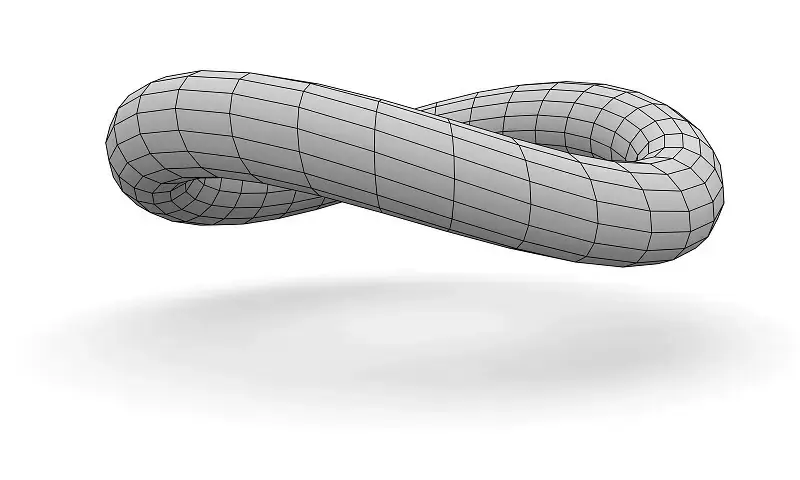How to Understand Topology: A Step-by-Step Introduction
Estimated reading time: 9 minutes
Topology is a branch of mathematics. It deals with the properties of space. These properties are preserved under continuous transformations like stretching, bending, and twisting. It is a fundamental field of study in mathematics and has applications in various scientific disciplines. In this blog post, we will explore it’s basic concepts of including points, sets, neighborhoods, topological spaces, continuity, open and closed sets, compactness, topological equivalence and homeomorphisms, the fundamental group and homotopy, topological invariants and classification, as well as the applications of topology in mathematics and science.
Key Takeaways
- Topology studies the properties of space. We preserve these properties are under continuous transformations.
- It is important because it provides a framework for understanding the shape and structure of objects and spaces.
- The basic concepts include points, sets, and neighborhoods. We use them to define topological spaces and continuity.
- Open and closed sets are important in this because they allow us to define limits and boundaries of spaces.
- Compactness is a key concept in it that allows us to study the behavior of spaces under certain transformations.
What is Topology and Why is it Important?
Researchers study the properties of space. These properties are preserved under continuous transformations. It focuses on the intrinsic properties of space rather than its specific geometric shape or size. Topology provides a framework for understanding the structure and properties of objects and spaces in a more abstract and general way. It allows mathematicians to analyze and classify different types of spaces based on their topological properties.
Topology is important in mathematics because it provides a foundation for many other branches of mathematics. It is used in algebraic topology, differential geometry, functional analysis, and many other areas of mathematics. In addition to its importance in mathematics, it also has applications in various scientific disciplines. For example, physicists use it to study the properties of space-time in general relativity, and biologists use it to analyze the structure and function of proteins.
The Basic Concepts of Topology: Points, Sets, and Neighborhoods
In topology, a point is an element of a set that represents a location in space. A set is a collection of points or objects. Sets are used to define the structure and properties of spaces. A neighborhood of a point is a set that contains all points within a certain distance from that point. We use neighborhoods to define the concept of continuity in topology.
For example, consider a set of points on a line. Each point represents a location on the line, and the set of all points forms the space. A neighborhood of a point on the line would be an interval that contains all points within a certain distance from that point. The concept of neighborhoods allows us to define the notion of continuity in topology.
Understanding Topological Spaces and Continuity
A topological space is a set of points along with a collection of subsets called open sets. The open sets satisfy certain properties that allow us to define the concept of continuity in topology. In it, a function is continuous if the preimage of an open set is an open set.
Continuity is an important concept in this. It allows us to study properties of spaces preserved under continuous transformations. For example, if two spaces are homeomorphic, which means that there exists a continuous function between them, then they have the same topological properties.
The Importance of Open and Closed Sets
In topology, open and closed sets play a crucial role in defining the structure and properties of spaces. An open set is a set that contains all its limit points, while a closed set is a set that contains all its boundary points. We use open and closed sets to define the concepts of continuity, compactness, and connectedness.
Open sets are important in this because they allow us to define the concept of continuity. If the preimage of an open set is an open set, then a function is continuous. Closed sets are important because they allow us to define the concept of compactness. A space is compact if every open cover has a finite subcover.
The Role of Compactness in Topology

Compactness is an important concept in it because it captures the idea of finiteness or boundedness in a space. A space is compact if every open cover has a finite subcover. Compactness is a property preserved under homeomorphisms. It allows us to study the properties of spaces maintained under continuous transformations.
For example, consider a closed interval on the real line. The closed interval is compact because every open cover has a finite subcover. However, an open interval on the real line is not compact because there exists an open cover that does not have a finite subcover.
Topological Equivalence and Homeomorphisms
Topological equivalence is a relation between two spaces that preserves their topological properties. Two spaces are topologically equivalent if there exists a continuous function between them that is invertible. We call this function a homeomorphism.
Homeomorphisms are important. They help study the properties of spaces. These properties are preserved under continuous transformations.
For example, a circle and a square are topologically equivalent because there exists a continuous function between them that is invertible.

The Fundamental Group and Homotopy
The fundamental group is a mathematical object that captures the topological properties of a space. It is a group that consists of equivalence classes of loops in the space. Two loops are considered equivalent if they can be continuously deformed into each other.
Homotopy is the process of continuously deforming one function into another. Homotopy is an important concept. It allows us to study the properties of spaces. These properties are preserved under continuous transformations. For example, if two spaces have the same fundamental group, then they are topologically equivalent.
Topological Invariants and Classification
A topological invariant preserves a property of a space under homeomorphisms. It allows us to classify different types of spaces based on their topological properties. Examples of topological invariants include the Euler characteristic, the genus, and the Betti numbers.
Topological invariants are important. They allow us to study properties of spaces preserved under continuous transformations. For example, the Euler characteristic is a topological invariant. You can use it to classify different types of surfaces.
Applications in Mathematics and Science
Topology has numerous applications in mathematics and science. In mathematics, people use it in algebraic topology, differential geometry, and functional analysis. They also use it in many other areas. In science, physicists use it in physics to study the properties of space-time in general relativity. Biology, researchers use it to analyze the structure and function of proteins.
In physics, topology studies the properties of space-time in general relativity. Continuous transformations preserve curvature, which is a topological property in general relativity. In biology, it analyzes the structure and function of proteins. Continuous transformations preserve the topological process of folding a protein into its native state.
Further Resources for Learning Topology and its Applications
There are many resources available for learning topology and its applications. Some recommended books on topology include “Topology” by James R. Munkres, “Introduction to Topology” by Bert Mendelson, and “Algebraic Topology” by Allen Hatcher. Online resources such as MIT OpenCourseWare and Khan Academy also offer free courses on topology.
To effectively use these resources, it is important to start with the basics and gradually build up your understanding of the subject. It is also helpful to work through exercises and practice problems to reinforce your understanding of the concepts. Additionally, seeking out a mentor or joining a study group can provide valuable support and guidance as you learn topology.
Conclusion
Mathematics is a fundamental field of study. It deals with the properties of space. These properties are preserved under continuous transformations. It provides a framework for understanding the structure and properties of objects and spaces in a more abstract and general way. Topology has applications in various scientific disciplines, including physics, biology, and computer science. It is an important tool for analyzing and classifying different types of spaces based on their topological properties. By studying topology, we can gain a deeper understanding of the structure and properties of the world around us.
You might want to check out this fascinating article on the field of computer science. “10 Inspiring Innovators in the Field of Computer Science” showcases some of the brilliant minds who have made significant contributions to this ever-evolving discipline. From pioneers like Ada Lovelace and Alan Turing to modern-day visionaries like Grace Hopper and Tim Berners-Lee, this article provides a glimpse into the remarkable individuals who have shaped the world of technology as we know it.
To stay updated with the latest developments in STEM research, visit ENTECH Online. This is our digital magazine for science, technology, engineering, and mathematics. Furthermore, at ENTECH Online, you’ll find a wealth of information.
In addition, we offer insights and resources to fuel your curiosity. Ultimately, our goal is to inspire your passion for new scientific discoveries. Moreover, ENTECH Online provides everything a teen wants to know for career planning.
Everything a teen wants to know for career planning.
FAQs
What is topology?
Topology, a branch of mathematics, studies the properties of space that continuous transformations preserve, such as stretching, bending, and twisting.
Why is topology important?
It has applications in many fields, including physics, engineering, computer science, and biology. It provides a way to study the shape of objects and spaces without worrying about their exact size or location.
What are some basic concepts in topology?
Some basic concepts include points, sets, open sets, closed sets, neighborhoods, continuity, homeomorphisms, and connectedness.
What is a topological space?
A topological space is a set of points together with a collection of open sets that satisfy certain axioms. The open sets define the topology of the space. This determines which properties stay the same during continuous transformations.
What is a homeomorphism?
A homeomorphism is a continuous function between two topological spaces that has a continuous inverse. In other words, it is a function that preserves the topological properties of the spaces, such as connectedness and compactness.
What is connectedness?
Connectedness is a property of a space. It means one cannot divide the space into two disjoint open sets. In other words, there is no way to separate the space into two parts that do not overlap.
What is compactness?
Compactness is a property of a space that means it is “small” in some sense. Specifically, it means that every open cover of the space has a finite subcover. In other words, it is possible to cover the space with a finite number of open sets.
Thanks for reading!
Check out ENTECH magazine at entechonline.com for articles by experienced professionals, innovators, and researchers.
Disclaimer: This blog post is not intended to provide medical advice. Please consult with a healthcare professional before making any changes to your diet or lifestyle. AI-generated images are used only for illustration and decoration. Their accuracy, quality, and appropriateness can differ. Users should avoid making decisions or assumptions based only on these images.







Great 👍
Thanks for your comment, keep visiting entechonline.com for more articles related to your interests.